Golang String To Int
Go is a statically typed programming language that requires explicit conversions when working with different data types. While Go provides native support for integers, there may be instances where you need to convert a string representation of a number into its corresponding integer value. This article will explore various methods of converting a string to an integer in Go, using the strconv package.
Converting a String to an Integer Using the strconv Package
The strconv package in Go provides functions for converting strings to different types, including integers. The strconv.Atoi() function is commonly used for parsing strings into integers. This function takes a string as an input and returns the corresponding integer value, along with an error value.
Understanding the strconv.Atoi() Function
To convert a string to an integer using the strconv.Atoi() function, you simply pass the string as an argument to the function. Here’s an example:
“`
package main
import (
“fmt”
“strconv”
)
func main() {
str := “123”
num, err := strconv.Atoi(str)
if err != nil {
// handle error
}
fmt.Println(num)
}
“`
In this example, the string “123” is converted to the integer value 123 using the strconv.Atoi() function. The resulting integer value is then printed to the console.
Handling Invalid Input Errors
When using the strconv.Atoi() function, it is important to handle potential errors that may occur if the input string cannot be parsed as an integer. If the string contains non-numeric characters or exceeds the range of valid integer values, the function will return an error. To handle such errors, you can check the value of the error variable returned by the function:
“`
package main
import (
“fmt”
“strconv”
)
func main() {
str := “abc”
num, err := strconv.Atoi(str)
if err != nil {
fmt.Println(“Invalid input:”, err)
return
}
fmt.Println(num)
}
“`
In this example, the string “abc” cannot be converted to an integer, resulting in an error. The error message “Invalid input: strconv.Atoi: parsing “abc”: invalid syntax” is printed to the console.
Parsing Strings to Signed and Unsigned Integers
By default, the strconv.Atoi() function assumes that the input string represents a signed integer. However, if you want to parse an unsigned integer, you can use the strconv.ParseUint() function. This function takes an additional argument specifying the base (or radix) for parsing the string.
“`
package main
import (
“fmt”
“strconv”
)
func main() {
str := “123”
num, err := strconv.ParseUint(str, 10, 32)
if err != nil {
// handle error
}
fmt.Println(num)
}
“`
In this example, the string “123” is parsed as an unsigned integer using strconv.ParseUint() with a base of 10. The resulting unsigned integer value is then printed to the console.
Dealing with Different Integer Sizes
Go supports different sizes of integers, such as int32 and int64. To specifically convert a string to these integer sizes, you can use the strconv.ParseInt() function. This function takes three arguments: the input string, the base, and the bit size of the integer.
“`
package main
import (
“fmt”
“strconv”
)
func main() {
str := “123”
num, err := strconv.ParseInt(str, 10, 32)
if err != nil {
// handle error
}
fmt.Println(num)
}
“`
In this example, the string “123” is parsed as a signed integer with a bit size of 32 using strconv.ParseInt(). The resulting integer value is then printed to the console.
Using the strconv.ParseInt() Function for More Control
The strconv.ParseInt() function provides more flexibility compared to the strconv.Atoi() function. It allows you to specify the base for parsing and handles parsing errors differently.
Specifying the Base for Parsing
The second argument to the strconv.ParseInt() function specifies the base, or radix, for parsing the string. For decimal numbers, the base is usually 10. However, you can also parse strings representing numbers in different bases, such as binary (base 2) or hexadecimal (base 16).
“`
package main
import (
“fmt”
“strconv”
)
func main() {
str := “FF”
num, err := strconv.ParseInt(str, 16, 32)
if err != nil {
// handle error
}
fmt.Println(num)
}
“`
In this example, the string “FF” is parsed as a hexadecimal number using base 16. The resulting integer value is then printed to the console.
Handling Parsing Errors with strconv.ParseInt()
Similar to strconv.Atoi(), strconv.ParseInt() returns an error if the string cannot be parsed as an integer. You can handle parsing errors by checking the value of the error variable.
“`
package main
import (
“fmt”
“strconv”
)
func main() {
str := “abc”
num, err := strconv.ParseInt(str, 10, 32)
if err != nil {
fmt.Println(“Invalid input:”, err)
return
}
fmt.Println(num)
}
“`
In this example, the string “abc” cannot be converted to an integer, resulting in an error. The error message “Invalid input: strconv.ParseInt: parsing “abc”: invalid syntax” is printed to the console.
Converting a String to an int64 Type
If you need to convert a string to an int64 type, you can use the strconv.ParseInt() function with a bit size of 64.
“`
package main
import (
“fmt”
“strconv”
)
func main() {
str := “123”
num, err := strconv.ParseInt(str, 10, 64)
if err != nil {
// handle error
}
fmt.Println(num)
}
“`
In this example, the string “123” is parsed as a signed integer with a bit size of 64 using strconv.ParseInt(). The resulting int64 value is then printed to the console.
Converting Strings to Unsigned Integers
If you want to parse a string as an unsigned integer, you can use the strconv.ParseUint() function.
Using strconv.ParseUint() for Unsigned Integer Parsing
The strconv.ParseUint() function works similar to strconv.ParseInt(), but it returns an unsigned integer instead of a signed integer.
“`
package main
import (
“fmt”
“strconv”
)
func main() {
str := “123”
num, err := strconv.ParseUint(str, 10, 32)
if err != nil {
// handle error
}
fmt.Println(num)
}
“`
In this example, the string “123” is parsed as an unsigned integer using strconv.ParseUint() with a bit size of 32. The resulting unsigned integer value is then printed to the console.
Specifying the Base for Parsing Unsigned Integers
You can also specify the base, or radix, for parsing unsigned integers using strconv.ParseUint().
“`
package main
import (
“fmt”
“strconv”
)
func main() {
str := “FF”
num, err := strconv.ParseUint(str, 16, 32)
if err != nil {
// handle error
}
fmt.Println(num)
}
“`
In this example, the string “FF” is parsed as a hexadecimal number using base 16. The resulting unsigned integer value is then printed to the console.
Converting Strings to Floating-Point Numbers
If you need to convert a string to a floating-point number, you can use the strconv.ParseFloat() function.
Using strconv.ParseFloat() to Convert a String to a Float
The strconv.ParseFloat() function takes a string as input and returns the corresponding floating-point value.
“`
package main
import (
“fmt”
“strconv”
)
func main() {
str := “3.14”
num, err := strconv.ParseFloat(str, 64)
if err != nil {
// handle error
}
fmt.Println(num)
}
“`
In this example, the string “3.14” is parsed as a float using strconv.ParseFloat(). The resulting float value is then printed to the console.
Handling Parsing Errors with strconv.ParseFloat()
Similar to the strconv.Atoi() function, strconv.ParseFloat() returns an error if the string cannot be parsed as a float. You can handle parsing errors by checking the value of the error variable.
“`
package main
import (
“fmt”
“strconv”
)
func main() {
str := “abc”
num, err := strconv.ParseFloat(str, 64)
if err != nil {
fmt.Println(“Invalid input:”, err)
return
}
fmt.Println(num)
}
“`
In this example, the string “abc” cannot be converted to a float, resulting in an error. The error message “Invalid input: strconv.ParseFloat: parsing “abc”: invalid syntax” is printed to the console.
Converting Exponential Notation Strings to Floats
The strconv.ParseFloat() function also supports parsing strings in exponential notation, such as “1.23e+10”.
“`
package main
import (
“fmt”
“strconv”
)
func main() {
str := “1.23e+10”
num, err := strconv.ParseFloat(str, 64)
if err != nil {
// handle error
}
fmt.Println(num)
}
“`
In this example, the string “1.23e+10” is parsed as a float using strconv.ParseFloat(). The resulting float value is then printed to the console.
FAQs
Q: How do I convert a string to an int32 in Go?
A: To convert a string to an int32 in Go, you can use the strconv.ParseInt() function and specify a bit size of 32.
Q: How do I convert a string to an int64 in Go?
A: To convert a string to an int64 in Go, you can use the strconv.ParseInt() function and specify a bit size of 64.
Q: How do I change a string to an int in Go?
A: In Go, you can change a string to an int by using the strconv.Atoi() function.
Q: How do I convert an int to an int32 in Go?
A: Converting an int to an int32 in Go is done implicitly, as long as the value falls within the range of int32.
Q: How do I convert an interface to an int in Go?
A: To convert an interface to an int in Go, you need to assert the interface value to an int using type assertion, such as value.(int).
Q: How do I convert a string to an array in Go?
A: In Go, strings are immutable, so converting a string to an array requires creating a new array and copying each character of the string to the array.
Q: What is the strconv package in Go?
A: The strconv package in Go provides functions for converting strings to different types, including integers and floating-point numbers.
Q: How do I convert a string to a uint in Go?
A: To convert a string to a uint in Go, you can use the strconv.ParseUint() function and specify the desired bit size.
In conclusion, converting a string to an integer in Go can be easily accomplished using the strconv package. The strconv.Atoi() function is commonly used for parsing strings to integers, while strconv.ParseInt() and strconv.ParseUint() provide more control and flexibility for handling different integer sizes and bases. Additionally, the strconv.ParseFloat() function enables the conversion of strings to floating-point numbers. By understanding these functions and their usage, you can effectively convert string representations of numbers into their corresponding integer or floating-point values in Go.
How To Convert Strings To Integers In Go – Learn Golang #10
Keywords searched by users: golang string to int Convert string to int32 golang, Convert string to int64 Golang, Change string to int golang, Convert int to int32 golang, Convert interface to int golang, Golang string to array, Strconv Golang, Convert string to uint Golang
Categories: Top 69 Golang String To Int
See more here: nhanvietluanvan.com
Convert String To Int32 Golang
Introduction:
In the world of programming, it is common to encounter scenarios where we need to convert a string into an integer representation. This process, known as string to int conversion, can be quite useful in various situations. In this article, we will explore the process of converting a string to int32 in the Go programming language (Golang). We will delve into the details of this conversion technique, explain the underlying mechanisms, and provide examples illustrating its usage. So, let’s get started!
Understanding int32 in Golang:
Before we dive into the conversion process, let’s first grasp the concept of int32 in Golang. An int32 is a signed 32-bit integer type, which means it can store both positive and negative values ranging from approximately -2 billion to +2 billion. This data type is commonly used when a programmer needs to handle numerical values within a limited range.
Conversion Process:
In Golang, we can use the strconv package to convert a string into an int32 value. The strconv package provides various functions for string conversions, and strconv.Atoi() is the one we’ll specifically focus on for int32 conversion.
The strconv.Atoi() function takes a string as input and returns two values: the converted int32 value and an error (if any). Here’s the general syntax of this function:
func Atoi(s string) (int, error)
To convert a string to int32, we use this function, but we need to perform an additional type assertion to narrow the return type from int to int32. Here’s an example showcasing this conversion:
package main
import (
“fmt”
“strconv”
)
func main() {
str := “123”
num, err := strconv.Atoi(str)
if err != nil {
fmt.Println(“Error:”, err)
return
}
var convertedInt32 int32 = int32(num)
fmt.Println(“Converted int32:”, convertedInt32)
}
In the above code snippet, the string “123” is converted to an int32 value using strconv.Atoi(). Since the result of Atoi() is of type int, we then explicitly cast it to int32 using the int32() function. Finally, the converted int32 value is displayed using fmt.Println().
Handling Error Cases:
When converting a string to int32, we should always handle potential error cases. If the given string cannot be converted to an integer, the strconv.Atoi() function will return an error. Therefore, we should check for this error and take appropriate action. Here’s an updated version of the previous example, showcasing error handling:
package main
import (
“fmt”
“strconv”
)
func main() {
str := “abc”
num, err := strconv.Atoi(str)
if err != nil {
fmt.Println(“Error:”, err)
return
}
var convertedInt32 int32 = int32(num)
fmt.Println(“Converted int32:”, convertedInt32)
}
In this example, the string “abc” cannot be converted to an int32 value, resulting in an error. We detect this error by checking if err is nil, and if so, we display the error message. Properly handling errors allows our programs to gracefully recover from such situations.
FAQs:
Q: Can I convert a string to int32 directly without explicitly casting it?
A: No, the strconv.Atoi() function returns an int type, so we need to perform an explicit cast to int32 using int32().
Q: What happens if the string contains leading or trailing spaces?
A: If the string contains leading or trailing spaces, the strconv.Atoi() function will ignore them and successfully convert the numerical value in the string. However, if the string contains non-numeric characters, the conversion will fail.
Q: Can I convert a string to any other integer type apart from int32?
A: Yes, Golang provides various integer types such as int8, int16, int64, etc., and you can choose the appropriate integer type based on your requirements.
Q: How can I handle extremely large string numbers that cannot fit into int32?
A: If the string represents a number larger than the maximum value that can be stored in an int32, the conversion will fail. In such cases, you may consider using the strconv.ParseInt() or strconv.ParseUint() functions to convert the string to int64 or uint64, respectively.
Q: Are there any alternatives to strconv.Atoi() for string to int32 conversion?
A: Yes, you can use the strconv.ParseInt() or strconv.ParseUint() functions to directly convert a string to int32 or uint32, respectively. These functions provide more flexibility and control over the conversion process.
Conclusion:
In this comprehensive guide, we explored the process of converting a string to int32 in Golang. We learned about the strconv.Atoi() function, its usage, and error handling techniques. We also discussed the concept of int32 in Golang and how to handle different scenarios during conversion. By understanding this conversion process, you will be equipped to handle string to int32 conversions effectively in your Golang programs.
Convert String To Int64 Golang
Introduction:
In Go programming language (Golang), there are various scenarios where we need to convert a string into an int64 data type. Whether it’s parsing user input, reading numeric values from files, or handling database queries, converting string to int64 is a common task. In this article, we will explore different techniques and best practices to achieve this conversion effectively.
1. Using the strconv package:
The strconv package in Golang provides functions for converting strings to different data types, including int64. One such function is ParseInt. It takes two arguments – the string to be converted and the base (usually 10 for decimal numbers). Let’s look at an example:
“`
package main
import (
“fmt”
“strconv”
)
func main() {
str := “12345”
num, err := strconv.ParseInt(str, 10, 64)
if err != nil {
fmt.Println(“Error:”, err)
return
}
fmt.Println(“Converted int64:”, num)
}
“`
In this example, we convert the string “12345” to an int64 using strconv.ParseInt. The second argument 10 indicates base 10. The function returns two values – the converted value of type int64 and an error. It is essential to handle the error properly to avoid runtime crashes.
2. Error handling and conversions:
When converting a string to int64, it is crucial to handle potential errors. One common mistake is using incorrect base values, leading to conversion errors. The strconv.ParseInt function returns an error if the conversion fails due to invalid input or base. Here’s an example of how to handle errors gracefully:
“`
package main
import (
“fmt”
“strconv”
)
func main() {
str := “not-a-number”
num, err := strconv.ParseInt(str, 10, 64)
if err != nil {
fmt.Println(“Error:”, err)
return
}
fmt.Println(“Converted int64:”, num)
}
“`
In this example, the string “not-a-number” cannot be converted to an int64, resulting in an error. By checking the error value, we can handle the conversion failure safely.
3. Checking converted value boundaries:
When converting a string to int64, it is essential to ensure that the resulting value falls within the range of int64. This is especially important when dealing with large numbers or when handling user input. We can use the constants provided by the math package to check the boundaries:
“`
package main
import (
“fmt”
“math”
“strconv”
)
func main() {
str := “9223372036854775808”
num, err := strconv.ParseInt(str, 10, 64)
if err != nil {
fmt.Println(“Error:”, err)
return
}
if num > math.MaxInt64 || num < math.MinInt64 {
fmt.Println("Value is out of int64 range")
return
}
fmt.Println("Converted int64:", num)
}
```
In this example, we attempt to convert the string "9223372036854775808" to int64. As this number exceeds the maximum value of int64, it falls outside the valid range. By comparing the converted value with the math.MaxInt64 and math.MinInt64 constants, we can detect such boundary violations.
4. Using the strconv.Atoi function:
In Go, another alternative for converting a string to an int64 is to use the strconv.Atoi function, which converts a string to an int. However, since int is platform-dependent, we need to perform an additional conversion from int to int64. Here's an example:
```
package main
import (
"fmt"
"strconv"
)
func main() {
str := "54321"
num, err := strconv.Atoi(str)
if err != nil {
fmt.Println("Error:", err)
return
}
int64Num := int64(num)
fmt.Println("Converted int64:", int64Num)
}
```
In this example, we convert the string "54321" to int using strconv.Atoi, and then explicitly convert it to int64 using a type conversion.
FAQs:
1. What happens if the string cannot be converted to int64?
When the string cannot be converted to int64, the conversion functions (such as strconv.ParseInt) return an error. It is crucial to handle this error to avoid unexpected crashes during runtime.
2. Can a string with leading or trailing spaces be successfully converted?
No, leading or trailing spaces in the input string will cause the conversion to fail. Ensure that the string is properly trimmed before conversion.
3. Can a negative number be successfully converted?
Yes, both positive and negative numbers can be converted to int64 using the strconv package functions. Ensure that the string represents a valid signed integer.
4. Are there any performance considerations when converting strings to int64?
Generally, converting strings to int64 is a fast operation in Go. However, benchmarking specific conversion scenarios can help identify potential performance bottlenecks.
Conclusion:
Converting a string to an int64 in Golang is a common task, and the strconv package provides efficient methods to accomplish this goal. By using functions like strconv.ParseInt or strconv.Atoi along with proper error handling and boundary checking, developers can safely and accurately convert strings to int64. Always remember to handle errors correctly and check for boundary violations to avoid unexpected runtime crashes.
Change String To Int Golang
In Golang, there may be times when we need to convert a string representation of a number to an integer value. This can be done using the strconv package in Golang, which provides various functions for converting different data types.
Converting a string to an integer is a common task in programming, particularly when dealing with user input or when working with data stored as strings. Golang offers a straightforward way to achieve this conversion, ensuring our code remains concise and efficient. Let’s explore how to convert a string to an integer in Golang.
Using strconv.Atoi() function:
The most common method to convert a string to an integer in Golang is by using the strconv.Atoi() function. This function parses the string and returns its integer representation. Here’s an example that demonstrates the usage of this function:
“`
package main
import (
“fmt”
“strconv”
)
func main() {
str := “42”
num, err := strconv.Atoi(str)
if err != nil {
fmt.Println(“Error occurred:”, err)
}
fmt.Println(num)
}
“`
In the above code snippet, we first import the required packages: fmt for printing the output, strconv for string conversions. The string “42” is then passed to strconv.Atoi(), which returns the integer value 42. Any error that occurs during the conversion is stored in the err variable. We can handle this error accordingly if needed.
Using strconv.ParseInt() function:
Another method of converting a string to an integer in Golang is by using the strconv.ParseInt() function. This function allows us to specify the base or number system of the string representation. The following example demonstrates this approach:
“`
package main
import (
“fmt”
“strconv”
)
func main() {
str := “101010”
num, err := strconv.ParseInt(str, 2, 64)
if err != nil {
fmt.Println(“Error occurred:”, err)
}
fmt.Println(num)
}
“`
In the above code, we pass the string “101010” to strconv.ParseInt(), along with the base 2 and the bit size 64. This function converts the binary string into an integer value. Similar to strconv.Atoi(), any possible error is stored in the err variable for error handling.
FAQs:
Q1: What happens if the string passed to strconv.Atoi() or strconv.ParseInt() cannot be converted to an integer?
A: If the string passed to these functions cannot be converted to an integer, an error is returned. We should always check for errors and handle them appropriately to prevent potential issues in our code.
Q2: Are there any limitations on the size of the integers that can be converted?
A: Yes, the size of the integers that can be converted depends on the bit size specified in the function. For example, if we use strconv.ParseInt(str, 2, 8), we can convert the binary string to an 8-bit integer. The maximum value that can be represented with the specified bit size should be considered.
Q3: Can we convert non-integer strings to integer values?
A: No, these functions are specifically designed for converting string representations of integer values. If we try to convert non-integer strings, an error will occur.
Q4: How can we convert a string to other numeric types like float or uint?
A: Golang provides functions such as strconv.ParseFloat() and strconv.ParseUint() to convert strings to other numeric types. The process is similar, but the function names and parameters differ based on the desired data type conversion.
Q5: Is there a way to perform the conversion without handling errors explicitly?
A: Yes, there is an alternative function called strconv.Atoi() that directly returns the integer value without an error. However, it is recommended to handle errors appropriately to ensure the reliability of our code and prevent unexpected behavior.
In conclusion, converting a string to an integer in Golang is easy and efficient using the strconv package. Whether we need to convert decimal or binary strings, Golang provides functions like strconv.Atoi() and strconv.ParseInt() to handle these conversions effectively. By following the examples and guidelines provided in this article, you can easily convert strings to integers in your Golang applications.
Images related to the topic golang string to int

Found 35 images related to golang string to int theme

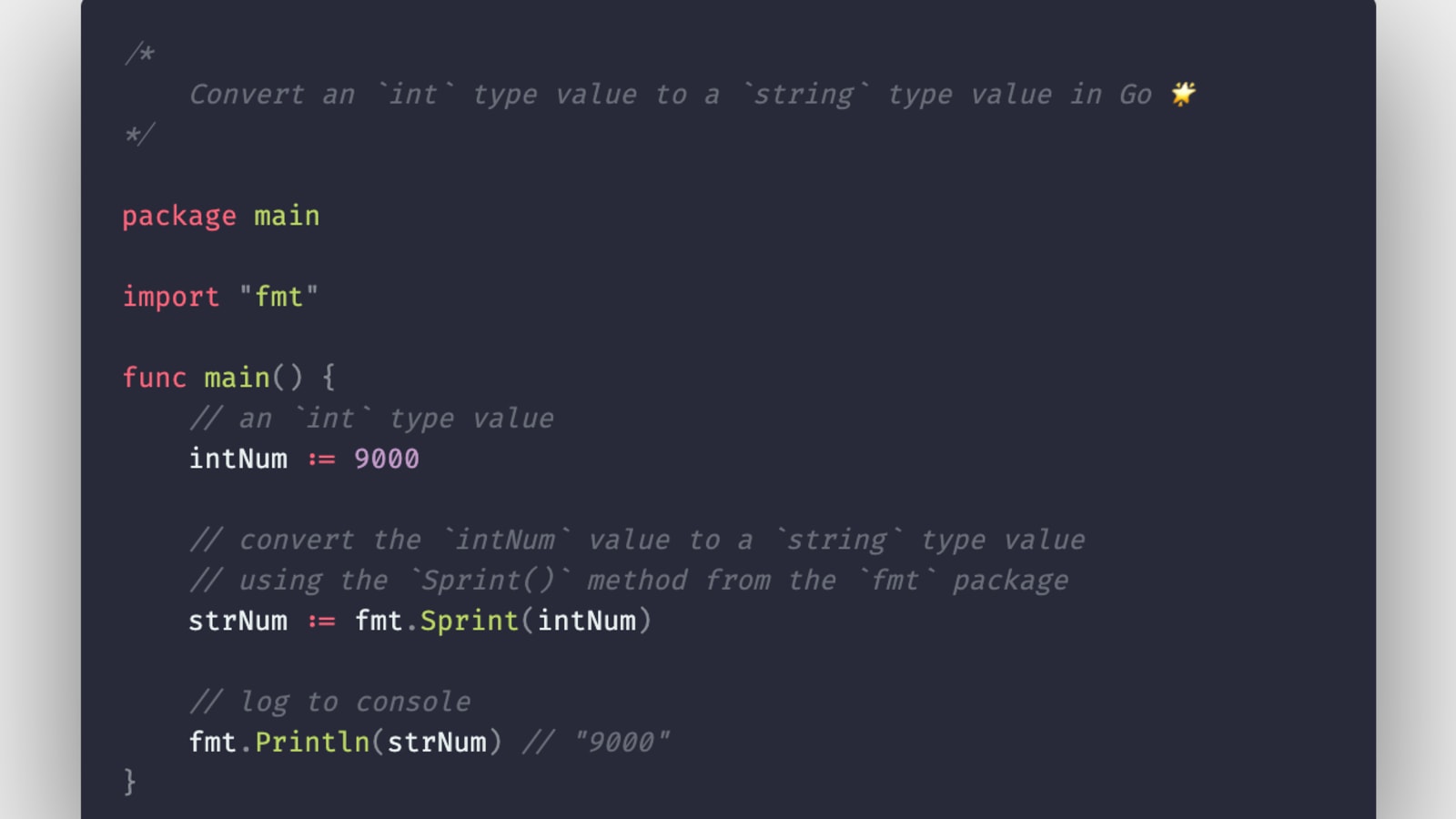
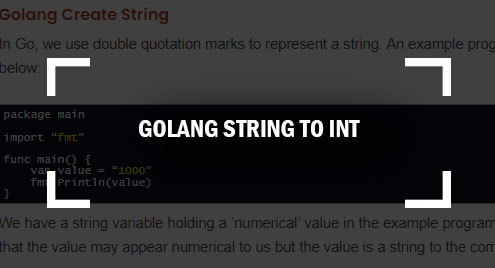


![Go] Chuyển đổi Int/String Slice sang kiểu dữ liệu String trong Golang - Technology Diver Go] Chuyển Đổi Int/String Slice Sang Kiểu Dữ Liệu String Trong Golang - Technology Diver](https://cuongquach.com/wp-content/uploads/2020/06/convert-int-string-slice-to-string.jpg)
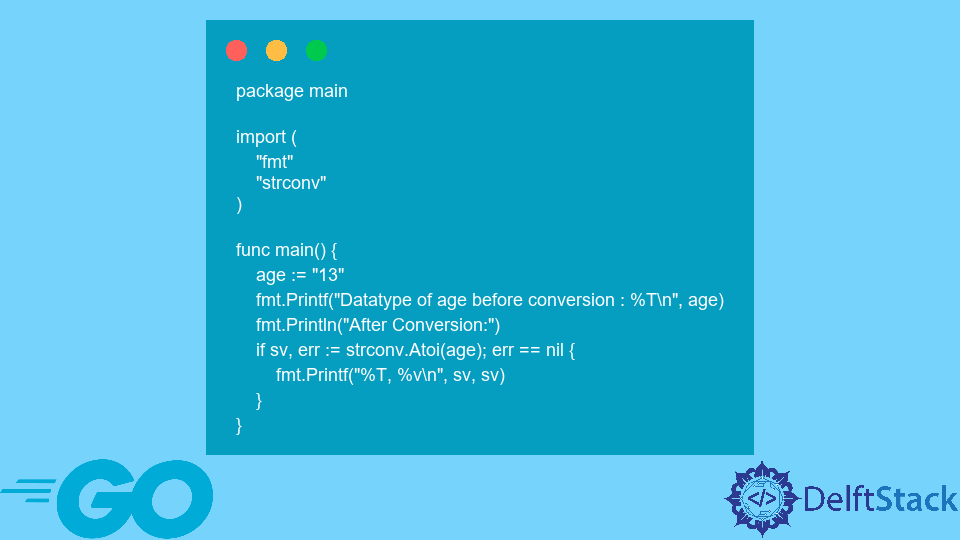

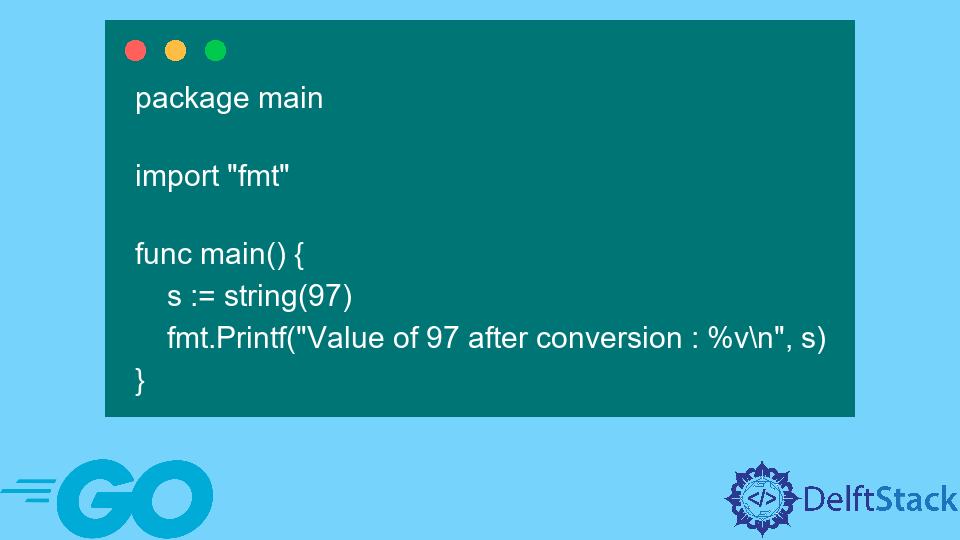
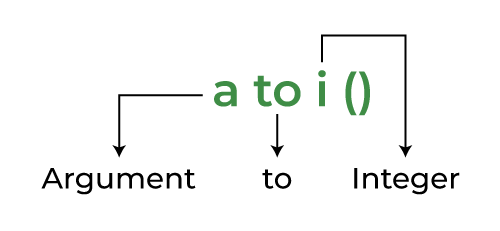
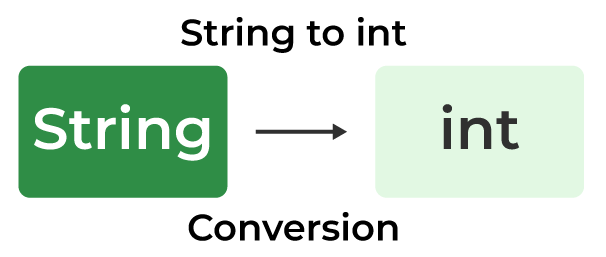
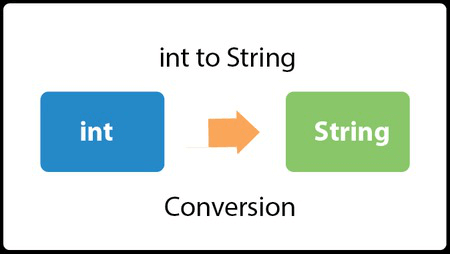






![Go] Chuyển đổi Int/String Slice sang kiểu dữ liệu String trong Golang - Technology Diver Go] Chuyển Đổi Int/String Slice Sang Kiểu Dữ Liệu String Trong Golang - Technology Diver](https://cuongquach.com/wp-content/uploads/2020/06/convert-int-string-slice-to-string-1280x720.jpg)

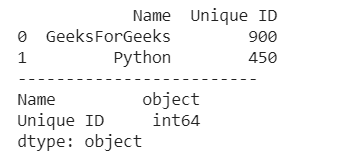

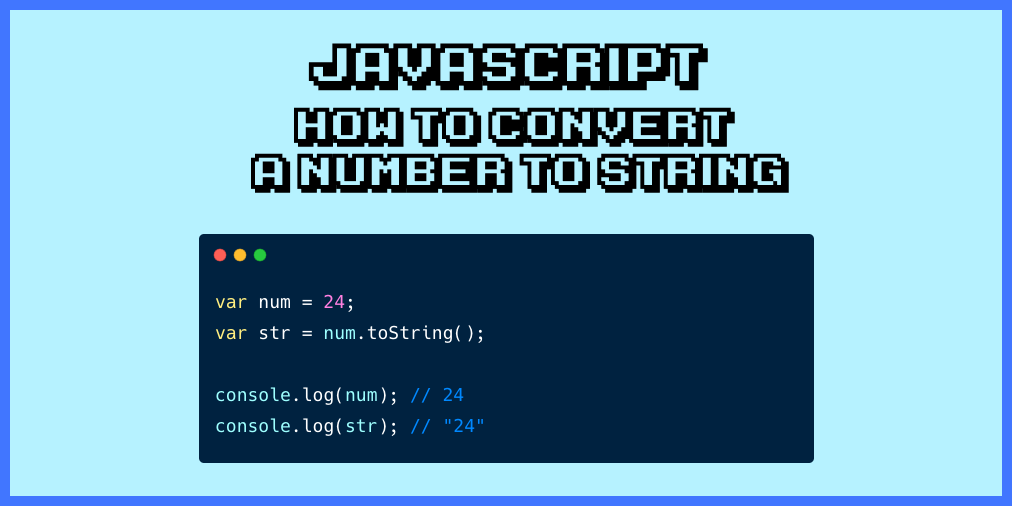







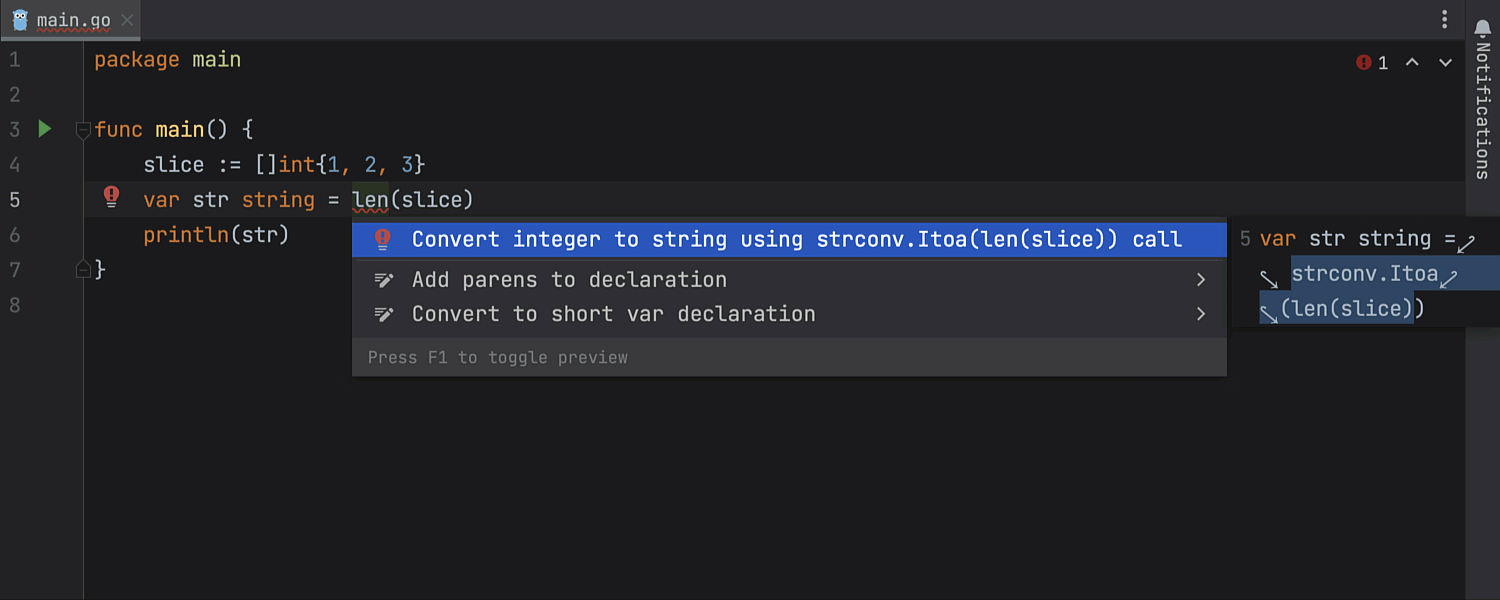





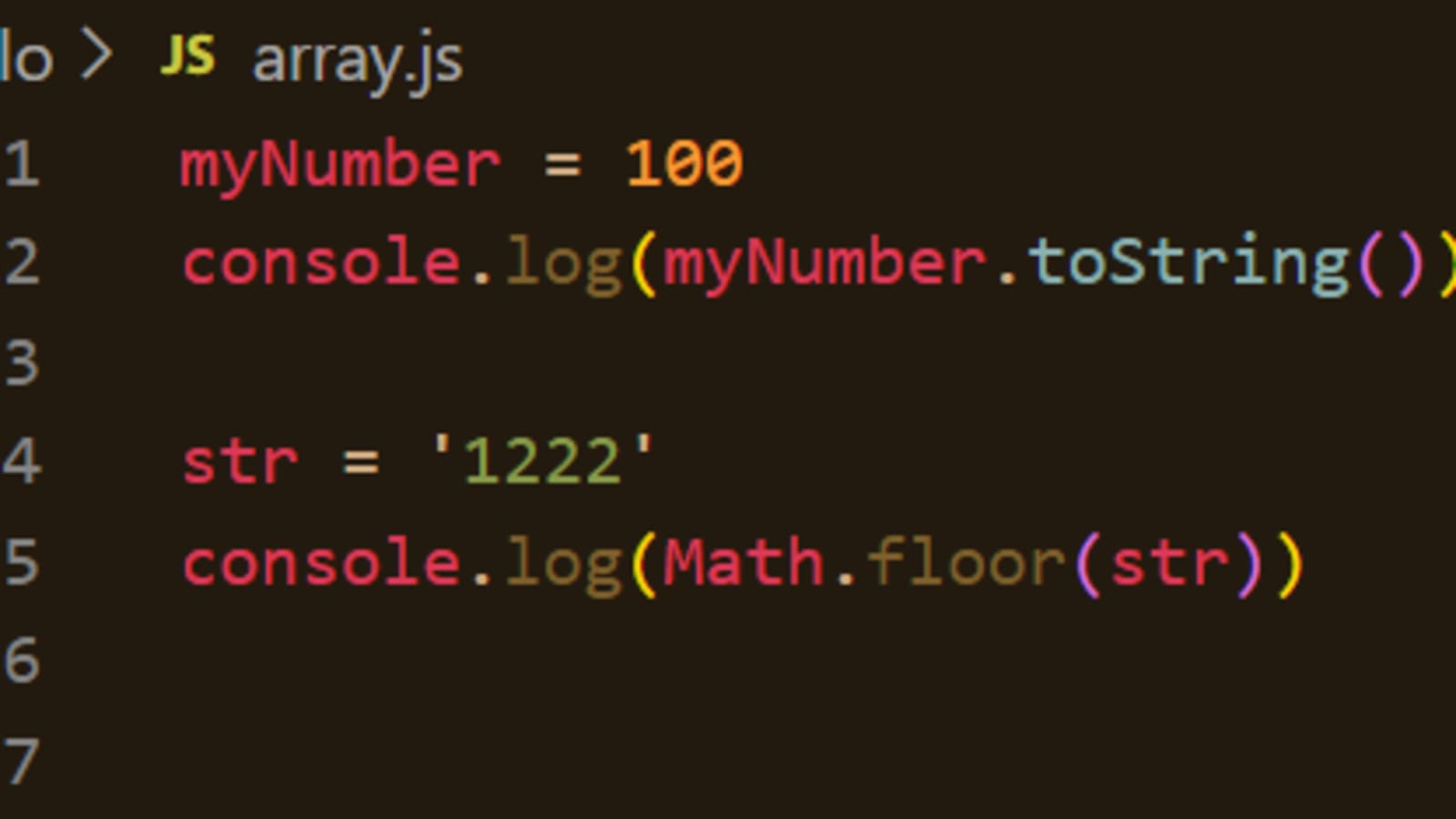


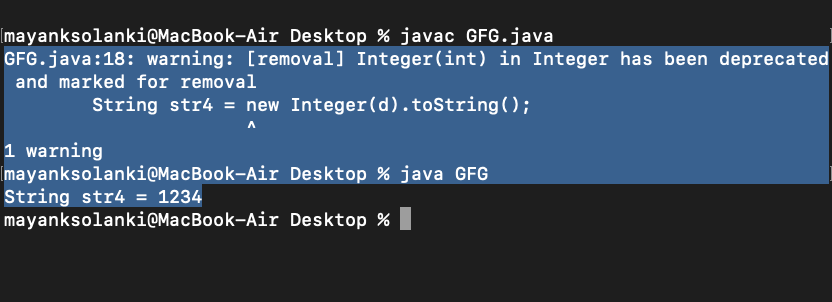


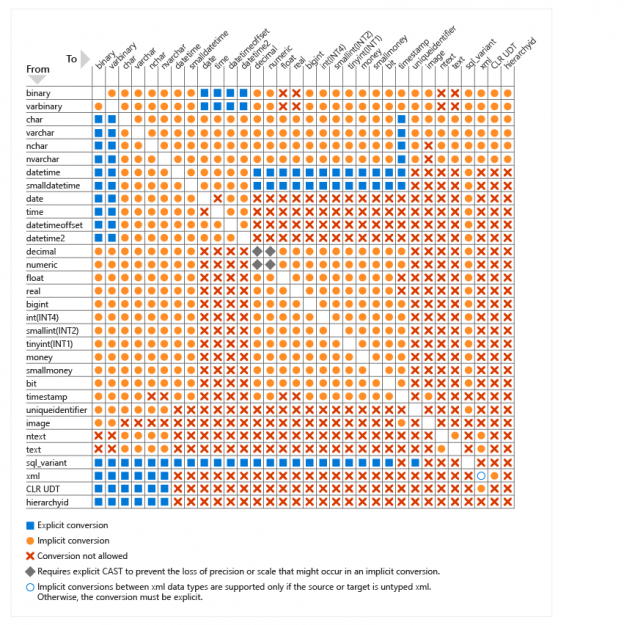



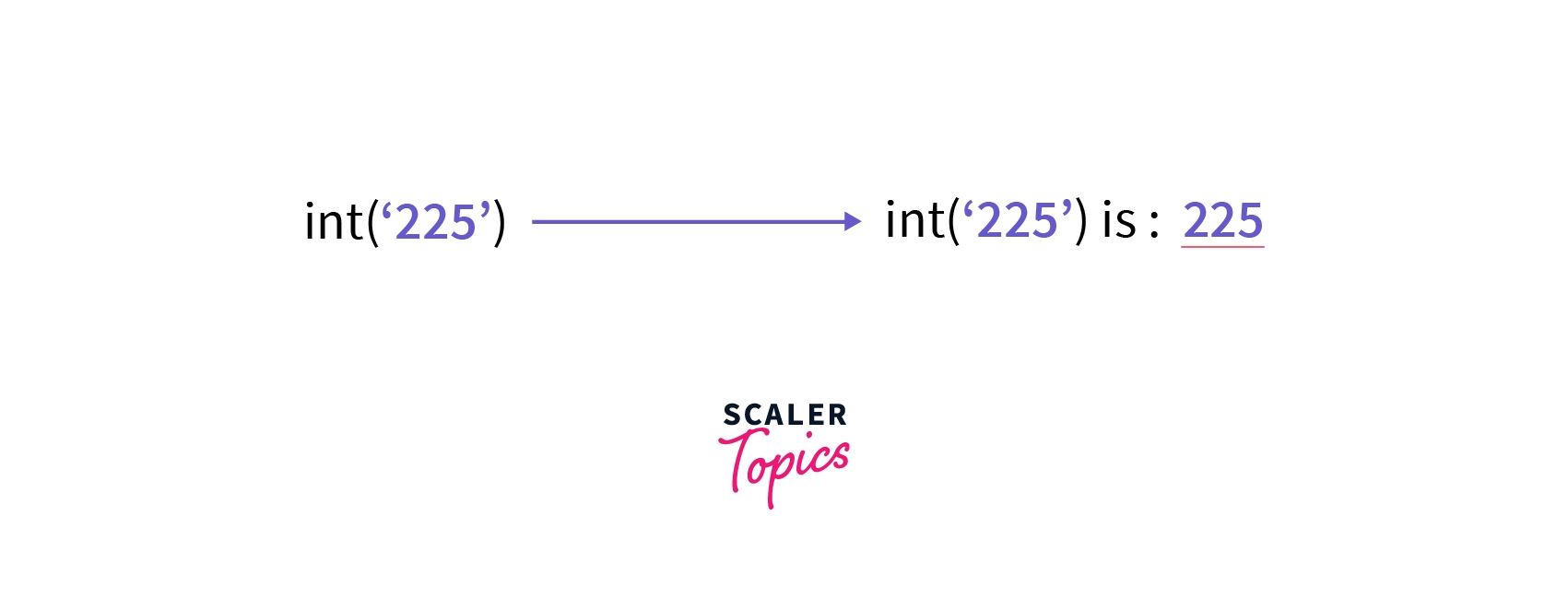
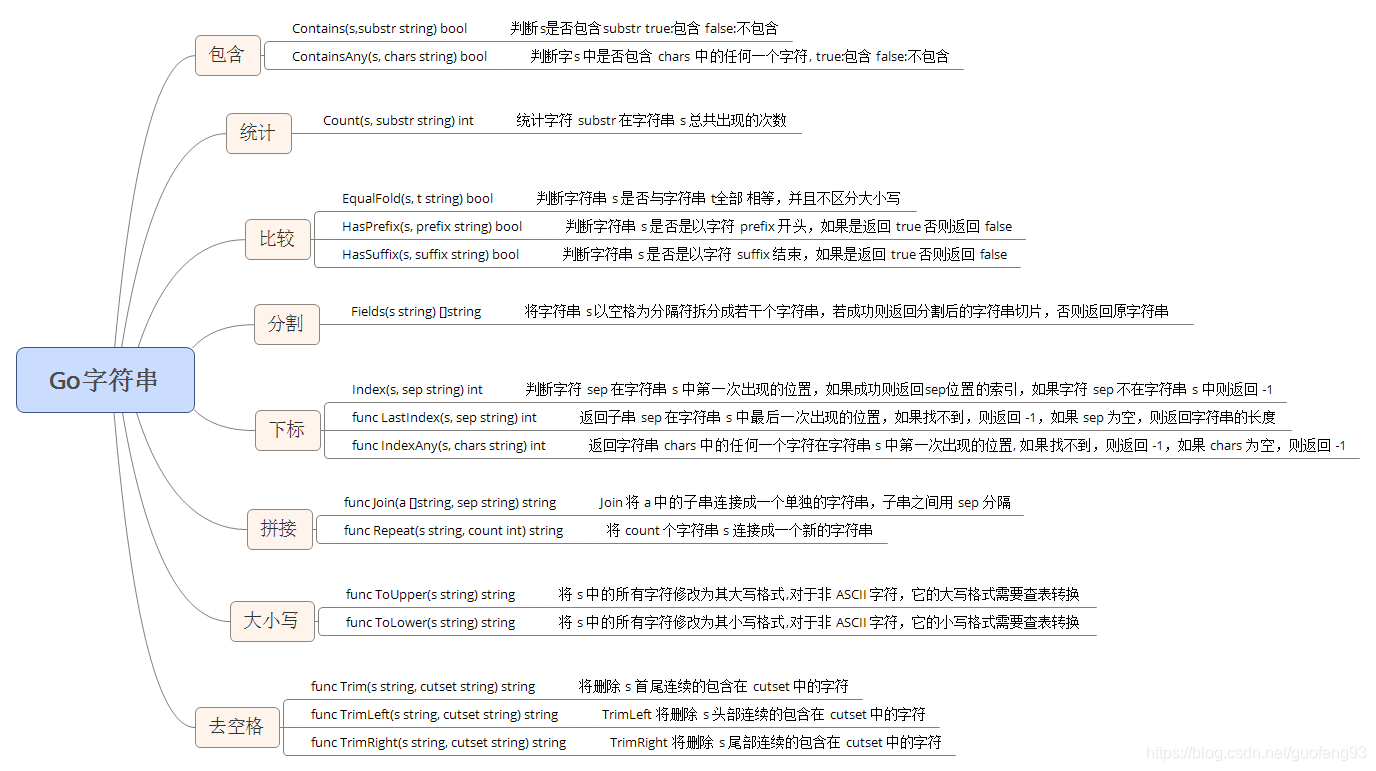

Article link: golang string to int.
Learn more about the topic golang string to int.
- How to Convert string to integer type in Go? – Eternal Dev
- How to Convert string to integer type in Go? – Golang Programs
- Convert string to integer type in Go? – Stack Overflow
- How to convert a string to int in Golang – Educative.io
- Golang Program to convert string type variables into int
- How to Convert string to integer type in Golang?
- How to Convert String to Integer Type in Golang? – Linux Hint
- How to convert String to Integer in Golang? – Tutorial Kart
- How to Convert Golang String to Int – AppDividend
See more: nhanvietluanvan.com/luat-hoc